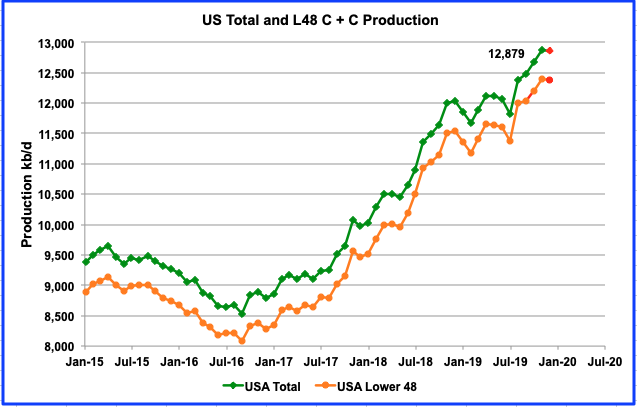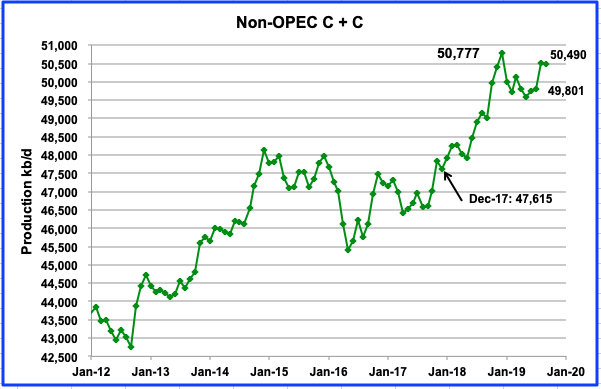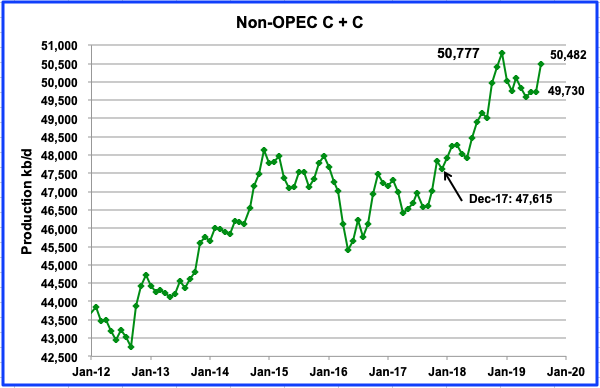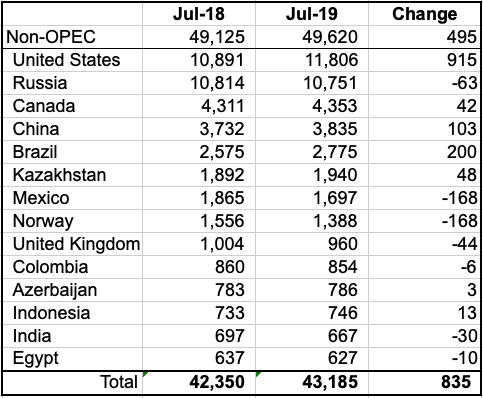A post by Ovi on peakoilbarrel
Below are a number of oil (C + C ) production charts for Non-OPEC countries created from data provided by the EIA’s International Energy Statistics and updated to May 2020. Information from other sources such as the OPEC and country specific sites is used to provide a short term outlook for future output and direction.
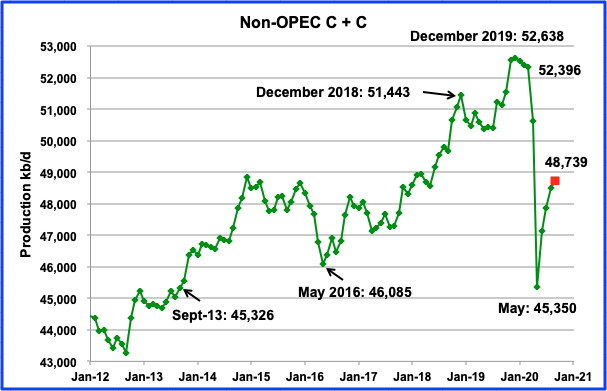
Non-OPEC production dropped slowly from a high of 52,638 kb/d in December 2019 to 52,396 kb/d in March 2020. In April that changed when we saw the first big drop in output from the Non-OPEC countries associated with Covid and with the drop in world oil prices. May output collapsed to 45,340 kb/d, which is close to the production level in September 2013.
Read More